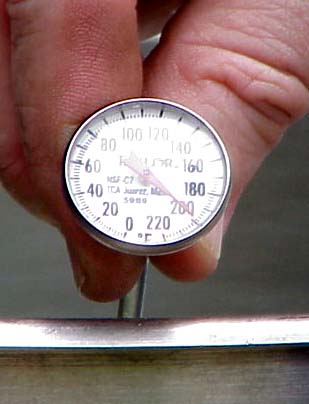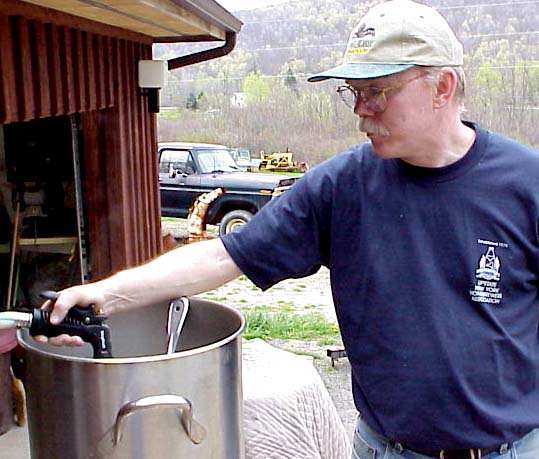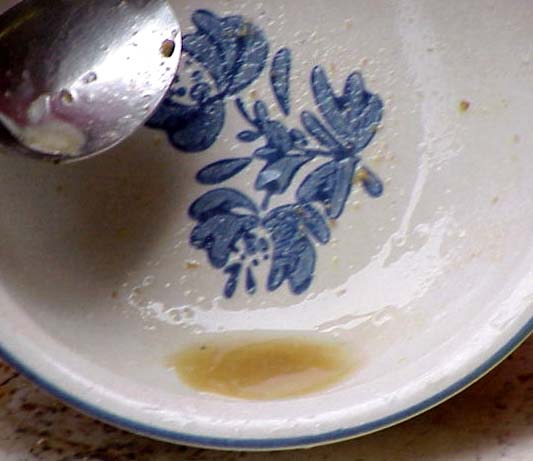We will heat our sparge water to around 200°F for sparging. The reason we do this is we know how much thermal loss our system has when sparging. The loss will occur from the tubing, the lid of the mash tun being cocked a bit and general thermal loss of the water in the sparge kettle. What we are after is a nice steady 168°F temperature of the grains while sparging. Any higher and you run the risk of extracting tannins that can give your finished beer a hot or harsh taste. Be sure to avoid this. Many brewers like to add some boiling water to the mash to raise the temperature to 168°F for 15 minutes and perform a "Mash Out". I have tried both methods but I personally don't do a mash out any more. This is a personal preference and about half the brewers I know do one, the other half don't.
Okay, things have changed, you always grow with your brewing. We now DO a mashout and have seen an increase in effeciency. This is due to the fact that my new digital thermometer told us we were actually only sparging at 150°F , which is not really acceptable. We have changed our routine as well. We now boil our sparge water and add about a gallon of this to the mash to bring the temp to 168°F and rest it for about 15-20 minutes. This also happens to be the same amount of time for the boiling water to cool to exactly 168°F, duh, amazing. So we then sparge with the 168°F water which keeps our grainbed at exactly 168°F. Live and learn. |
 |


